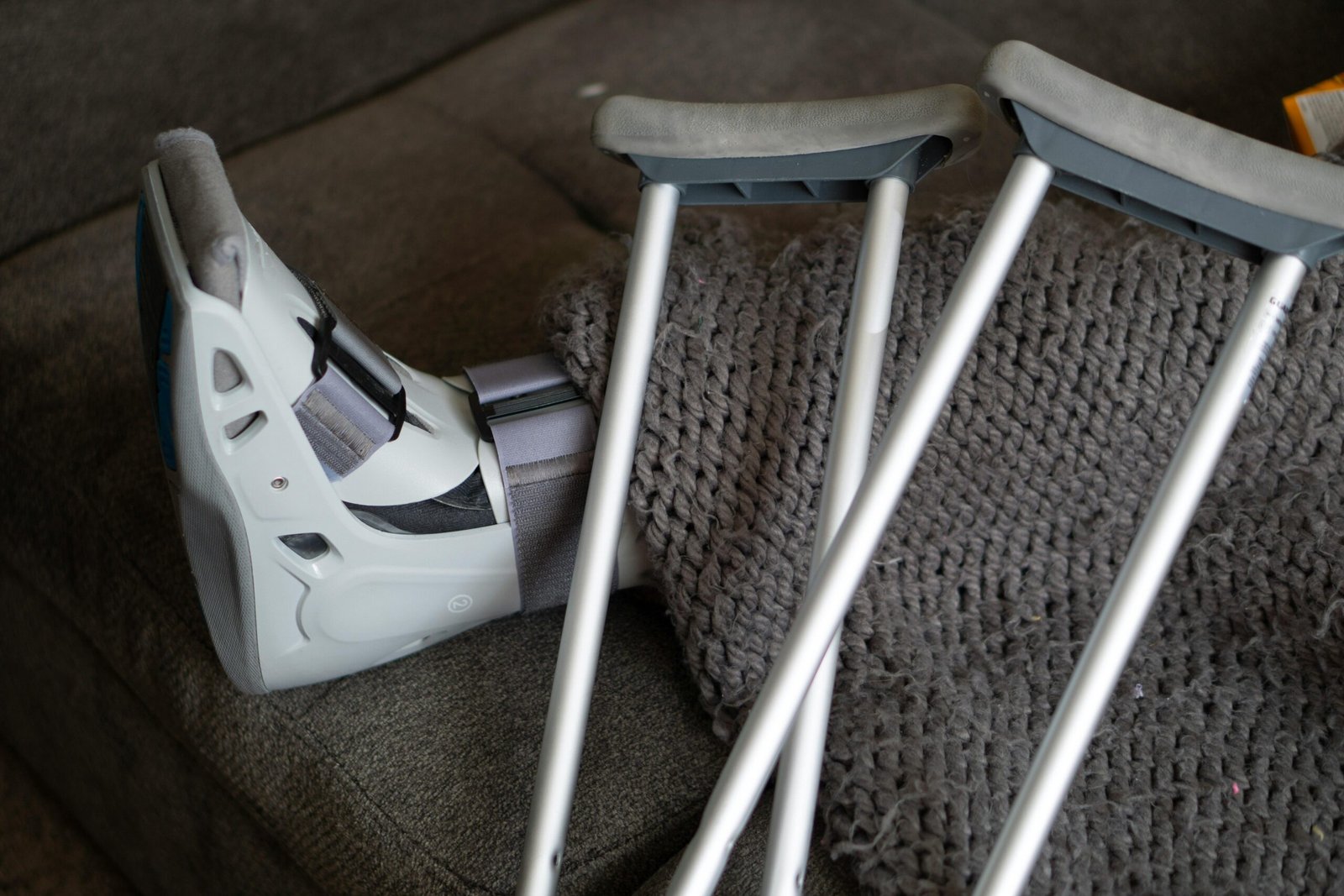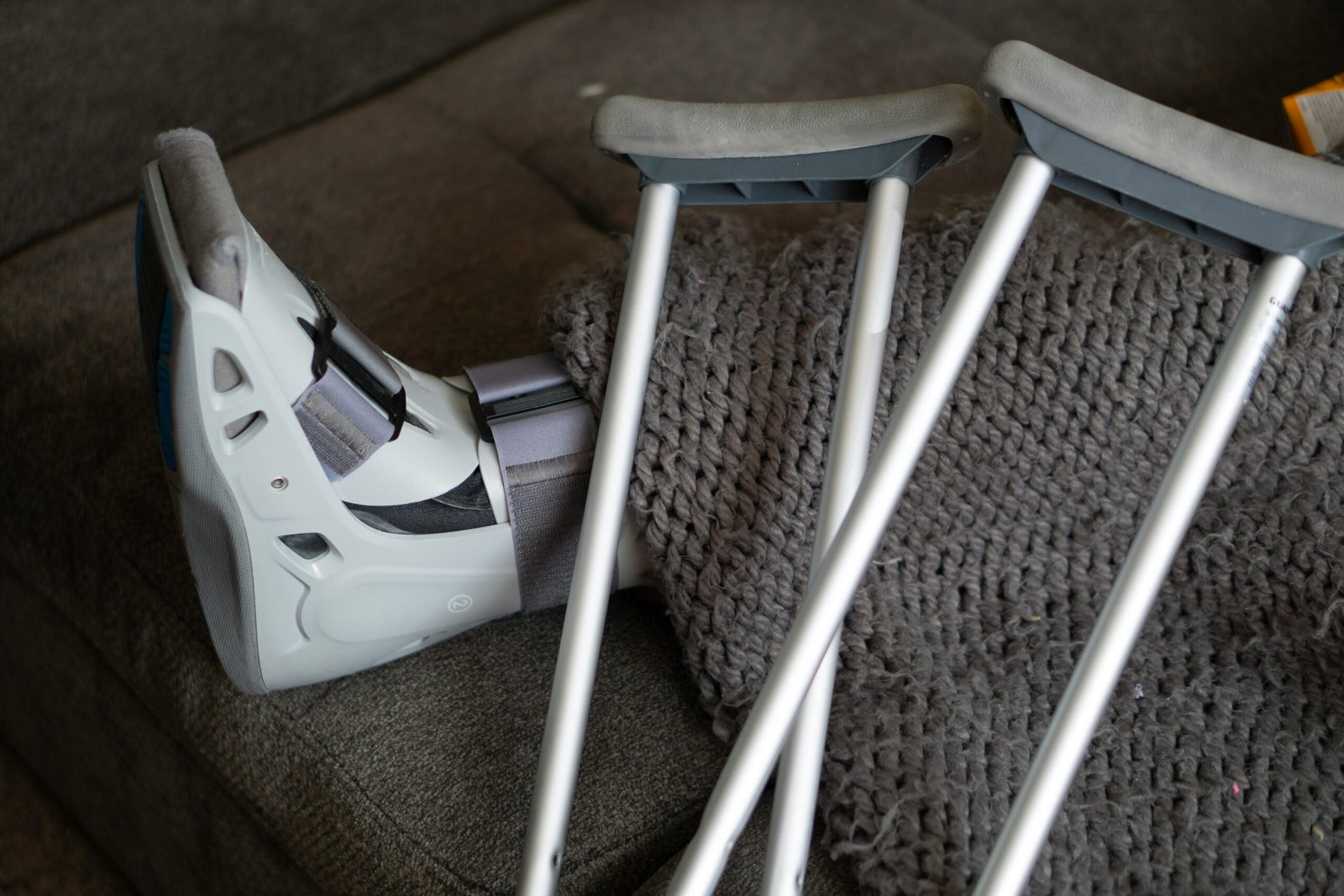
Having a rotator cuff injury can make simple tasks like sleeping challenging and uncomfortable. If you find yourself struggling to get a good night’s rest due to this injury, we have got you covered. In this article, we will share some helpful tips and tricks that will enable you to sleep comfortably, even with a rotator cuff injury. With these simple changes to your bedtime routine and some adaptive strategies, you can finally get the restful sleep you deserve. So, let’s dive right in and discover how you can improve your sleep quality while dealing with a rotator cuff injury.

Sleeping Position
Finding the right sleeping position is crucial for maintaining comfort and reducing pain when dealing with a rotator cuff injury. Two recommended sleeping positions for this condition are the back sleeping position and the side sleeping position.
Back Sleeping Position
Sleeping on your back is often considered the best sleeping position for individuals with a rotator cuff injury. This position helps to distribute the weight evenly and reduces pressure on the injured shoulder. To optimize your back sleeping position, use a pillow to support your neck and maintain proper spinal alignment. Additionally, placing a pillow under your knees can help alleviate any strain on your lower back.
Side Sleeping Position
If sleeping on your back is not comfortable for you, the side sleeping position may be a suitable alternative. When sleeping on your side with a rotator cuff injury, it is important to avoid resting your body weight directly on the injured shoulder. Instead, use a pillow for support. Place the pillow between your arms to keep them aligned and prevent any undue stress on the injured shoulder. Additionally, consider placing a pillow under your knee to keep your spine properly aligned and relieve pressure on your lower back.
Pillow Support
Choosing the right pillow can significantly improve your sleeping experience with a rotator cuff injury. The right pillow should provide adequate support and maintain proper spinal alignment. Consider the following factors when selecting a pillow:
Firmness Level
The firmness level of your pillow should be determined based on personal preference and comfort. However, it is generally advised to choose a pillow that is not too soft, as it may not offer enough support for your neck and shoulders, and can lead to discomfort.
Pressure Relief
Look for a pillow that offers good pressure relief, especially for the injured shoulder. Memory foam pillows are known to contour to the shape of your body, providing optimal pressure relief and support.
Supportive Material
Consider pillows made from supportive materials, such as latex or memory foam. These materials can provide better support and help alleviate pain and discomfort associated with a rotator cuff injury.
Body Contouring
Pillows that conform to the natural curves of your body can help maintain proper alignment and reduce pressure points. Body contouring pillows, such as those with a curved design or adjustable fill, may be beneficial for individuals with a rotator cuff injury.

Avoid Sleeping on the Injured Side
While it may be tempting to find a comfortable position that allows you to sleep on your injured side, it is best to avoid this to prevent aggravating the injury. Sleeping on the injured side can put excessive pressure on the shoulder joint, leading to increased pain and discomfort. Instead, focus on finding a sleeping position that minimizes strain on the injured shoulder, such as sleeping on your back or non-injured side.
Pre-sleeping Routine
Establishing a pre-sleeping routine can help relax your body and promote better sleep with a rotator cuff injury. Consider incorporating the following practices into your routine:
Warm Shower or Bath
Taking a warm shower or bath before bed can help relax your muscles and relieve any tension or stiffness in your shoulder. The warm water can also help soothe any pain associated with the rotator cuff injury, allowing for a more comfortable sleep.
Stretching Exercises
Engaging in gentle stretching exercises specifically targeting the shoulders and upper body can help improve flexibility and reduce tightness in the muscles surrounding the rotator cuff. It is important to consult with a healthcare professional or physical therapist for appropriate stretches that can be done safely without exacerbating the injury.
Pain Medication (if advised)
If your healthcare professional has prescribed pain medication or recommended over-the-counter pain relievers to manage your rotator cuff injury, take them as directed. Some pain medications may have a sedative effect, which can aid in falling asleep and staying asleep.
Relaxation Techniques
Incorporating relaxation techniques, such as deep breathing exercises, meditation, or listening to calming music, can help relax your mind and body before sleep. These techniques can reduce stress, promote relaxation, and create a conducive environment for a restful sleep.

Using Pillows for Support
Using pillows strategically can provide additional support to your injured shoulder and other areas of your body, promoting comfort and reducing pain when sleeping with a rotator cuff injury. Consider the following pillow placements for optimal support:
Under the Injured Arm
Placing a pillow under your injured arm can help relieve pressure and provide support to the shoulder. This will help keep the shoulder in a more neutral position, reducing strain and discomfort.
Between the Arms
For side sleepers, placing a pillow between your arms can help keep them aligned and prevent any unintentional rolling onto the injured shoulder. This can promote better spinal alignment and reduce the risk of putting excessive pressure on the injured area.
Under the Knee (for Side Sleepers)
If you sleep on your side, placing a pillow under your knee can help maintain proper spinal alignment and reduce strain on your lower back. This can also alleviate pressure on the rotator cuff by preventing any twisting or rotation of the body during sleep.
Support for the Neck
Using a pillow that adequately supports your neck is essential for maintaining proper spinal alignment. A pillow that is too high or too flat can strain the neck and exacerbate any discomfort caused by the rotator cuff injury. Find a pillow that keeps your head and neck in a neutral position, aligning the spine properly.
Avoiding Excessive Movement
Minimizing excessive movement during sleep can help prevent further irritation or injury to the rotator cuff. Consider the following strategies to limit movement:
Resting and Immobilization
Resting the injured shoulder and allowing it to heal is crucial. If recommended by your healthcare professional, consider immobilizing the shoulder using a protective brace or sling during sleep. This can restrict movement and provide stability to the injured area.
Limiting Reaching or Overhead Movements
Be mindful of your movements during sleep, especially if you tend to reach or make overhead motions unconsciously. These movements can strain the rotator cuff and lead to increased pain and discomfort. Practice keeping your movements in check, and use pillows for support if necessary.
Protective Braces or Slings
Using a protective brace or sling during sleep can help limit movement and provide added support to the injured shoulder. These devices can help prevent any accidental movements or positions that can worsen the condition.
Avoiding Twisting or Turning
When changing positions during sleep, be cautious of any twisting or turning motions that can strain the rotator cuff. Use smooth and controlled movements to prevent unnecessary stress on the injured shoulder.
Maintaining Proper Body Alignment
Proper body alignment is essential for reducing strain and promoting comfort when sleeping with a rotator cuff injury. Consider the following suggestions to maintain proper alignment:
Correct Posture
Pay attention to your overall posture while lying in bed. Maintain a straight and neutral spinal alignment by avoiding slouching or hunching forward. This can help alleviate unnecessary strain on the rotator cuff and prevent further discomfort.
Using Rolled-up Towels or Bolsters
If you find it challenging to maintain proper alignment by yourself, consider using rolled-up towels or bolsters strategically placed under specific areas of your body. For example, placing a rolled-up towel under your waist can help rebalance the pelvis and keep the spine aligned.
Balancing the Pelvis
For side sleepers, ensure that your pelvis is balanced and not tilted too far forward or backward. Proper alignment of the pelvis can contribute to better spinal alignment and reduce strain on the rotator cuff.
Strategic Pillow Positioning
Using pillows to support various areas of your body can aid in maintaining proper alignment. Place pillows under the neck, knees, or any other areas that require support to keep the body in a comfortable and aligned position.
Elevating the Injured Arm
Elevating the injured arm can help reduce pain and swelling associated with a rotator cuff injury. Consider the following approaches to elevate your injured arm during sleep:
Using a Sling or Supportive Pillow
Using a sling or a supportive pillow specifically designed to elevate the arm can help keep the injured shoulder in an elevated position during sleep. This can facilitate better blood circulation and reduce swelling.
Avoiding Direct Pressure on the Shoulder
Ensure that no direct pressure is applied to the injured shoulder when elevating it. The supporting device or pillow should provide gentle support without putting excessive pressure on the rotator cuff.
Comfortable Arm Positioning
While elevating the injured arm, find a position that feels comfortable and does not cause any additional pain or discomfort. Experiment with different arm positions until you find the one that works best for you.
Considering Sleep Aids
In some cases, sleep aids may be beneficial for individuals with a rotator cuff injury, particularly if the pain is interfering with sleep. It is important to consult with a healthcare professional before incorporating any sleep aids into your routine. Here are some options to consider:
Joint Support Supplements
Certain supplements, such as glucosamine and chondroitin, may offer joint support and help reduce inflammation associated with a rotator cuff injury. However, it is essential to consult with a healthcare professional before starting any new supplements to ensure they are safe for you and do not interfere with other medications or conditions.
Topical Pain Relief Creams
Topical pain relief creams or gels containing ingredients like menthol or capsaicin can provide temporary relief from pain associated with a rotator cuff injury. These creams work by numbing the area or reducing inflammation, allowing for a more comfortable sleep.
Natural Sleep Aids
Some individuals find relief in natural sleep aids, such as chamomile tea, lavender essential oil, or melatonin supplements. However, it is important to discuss these options with a healthcare professional to ensure they are suitable for your specific circumstances.
Consulting a Healthcare Professional
If your sleep is significantly disturbed by the pain or discomfort of a rotator cuff injury, consider discussing other sleep aid options with a healthcare professional. They can provide guidance on prescription medications that may be appropriate to help manage pain and improve sleep quality.
Improving Sleep Environment
Creating a conducive sleep environment is crucial for getting a good night’s rest, especially when dealing with a rotator cuff injury. Consider implementing these suggestions to improve your sleep environment:
Cool and Dark Room
Ensure that your bedroom is kept at a cool and comfortable temperature. A dark room promotes better sleep by blocking out external light that may interfere with your ability to fall asleep or stay asleep.
White Noise or Relaxing Music
Using white noise or relaxing music can help drown out any background noises that may disturb your sleep. These gentle sounds can create a soothing ambiance, promoting relaxation and better sleep quality.
Proper Ventilation
Maintain proper ventilation in your bedroom to ensure a constant supply of fresh air. A stuffy or overheated room can make it difficult to fall asleep and may lead to restlessness during the night.
Comfortable Bedding
Invest in comfortable and supportive bedding. Mattresses that provide the right level of firmness and pillows that adequately support your head and neck can significantly improve your sleep quality and reduce discomfort caused by the rotator cuff injury.
By following these tips and strategies, you can enhance your sleeping experience and improve your overall comfort while dealing with a rotator cuff injury. Remember, everyone’s needs and preferences may differ, so don’t be afraid to experiment and find what works best for you. If you have any concerns or questions, it is always advisable to consult with a healthcare professional or physical therapist for personalized advice and guidance. Sweet dreams and restful nights await!





